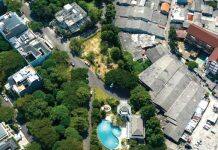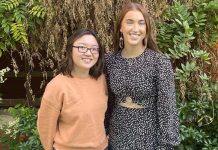Two University of Sydney-led research projects are among just nine selected by the Australian Government’s Global Science and Technology Diplomacy Fund to grow international collaboration, enhance Australia’s standing as a science and technology leader, and drive innovation and commercialisation in priority areas.


Associate Professor Markus Müllner and Professor Simon Ringer from the University of Sydney lead the two projects alongside collaborators in South Korea and Japan respectively.
Associate Professor Müllner’s project aims to produce new injectable hydrogels. Professor Ringer’s project will develop additive manufacturing techniques for magnets to decarbonise energy systems.
The funding, announced by the Minister for Industry and Science, Ed Husic MP, is delivered through the Australian Academy of Technological Sciences & Engineering, and the Australian Academy of Science. These grants enable Australian teams to collaborate with partners in Asia-Pacific countries on strategic science and technology projects capable of bringing direct benefits to advanced industries.
Pro-Vice-Chancellor (Research Infrastructure) Professor Simon Ringer, Faculty of Engineering
An additive manufacturing solution to the critical minerals supply challenges in rare-earth permanent magnets, $999,829
This project combines Australian and Japanese expertise and facilities in advanced manufacturing to conduct research on the development of high-value rare-earth permanent magnets using additive manufacturing, or ‘3D printing’. Permanent magnets are vital components of electric turbines and motors, making them integral to the success of decarbonising our energy systems. This is driving global demand in critical elements used in these magnets such as dysprosium, where an annual shortfall of 1500 tonnes valued at almost $1 billion is forecast by 2025.
Currently, nearly all dysprosium is used in permanent magnets produced overseas using complex, dirty and expensive powder metallurgy processes. Professor Ringer and his collaborators aim to reduce the dysprosium level in these magnets by 50 percent without compromising their magnetic performance. By precisely controlling how and where dysprosium is deployed in the microstructure, they will establish 3D printing as a viable production technique that is cleaner, more cost efficient, capable of producing complex geometries and which has real potential for local mass production. This project is designed as a translational materials science and technology initiative that enables Australia to contribute leadership to the future of advanced manufacturing of permanent magnets which serve as a critical enabler for net-zero.
Associate Professor Markus Müllner, School of Chemistry, Faculty of Science
Injectable hydrogels with biomimetic properties, $811,867
As the Australian population ages and chronic illnesses rise, innovative solutions in tissue engineering are becoming increasingly vital for improving health outcomes. Tissue engineering provides new treatment options (such as regeneration, localised drug delivery, functional replacements) that can minimise invasive surgery. Tissue-specific treatment options are expected to address persistent health challenges associated with some of the most prevalent illnesses in Australia including cardiovascular disease, osteoarthritis, dementia or cancer.
Hydrogels with tuneable properties are crucially determining the success of regenerative tissue engineering approaches. In this project, Associate Professor Müllner and his collaborators at Yonsei University in South Korea, UNSW, QUT and Gelomics will develop a new polymer-based hydrogel platform crucial for developing innovative and injectable gel scaffolds options. The mechanical properties of these scaffolds will be adjustable to match the tissue in need. The materials produced in this project will be designed to be compatible with printing applications, contributing to the growth of the additive manufacturing or ‘3D printing’ sector in Australia.








































